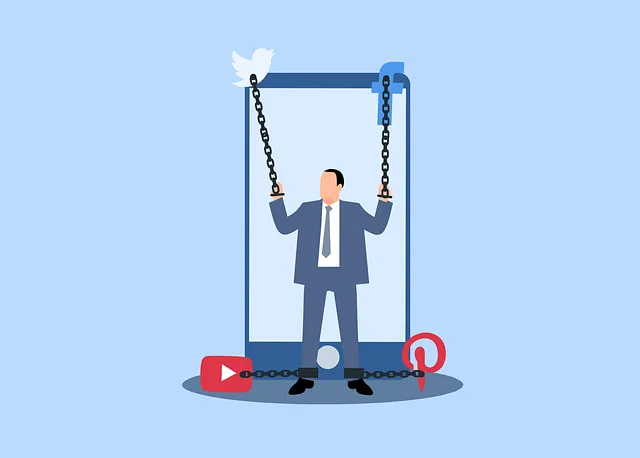Community Outreach Programs in Littleton, led by organizations like Kaiser, actively bridge the gap between communities and essential mental health services. Through public awareness campaigns, mental wellness coaching, and proactive engagement strategies, these initiatives reduce stigma and barriers to care. The innovative Littleton Model emphasizes education and empowerment, offering workshops and support groups for stress management and depression prevention. Integrating Kaiser's resources significantly improves access to tailored mental health programs, fostering a culture of prioritizing mental wellness and enhancing the overall well-being of Littleton residents. To get started with mental health help in Littleton, follow these steps: assess community needs, design targeted programs, build partnerships, and leverage multiple communication channels.
Community outreach programs are vital tools for connecting vulnerable populations with essential services. This article explores their profound role and impact, highlighting successful strategies like the Littleton Model, which revolutionizes mental health support. We delve into how organizations like Kaiser integrate resources to enhance accessibility, offering practical guidance through a step-by-step guide. Learn how these initiatives ensure folks, especially those in remote or underserved areas, can readily get the mental health help they need, much like the Littleton approach, by leveraging community connections and tailored programs.
- Understanding Community Outreach Programs: Their Role and Impact
- The Littleton Model: A Successful Mental Health Outreach Strategy
- Integrating Kaiser's Resources: Accessing Mental Health Help in Local Communities
- Implementing Effective Outreach: Step-by-Step Guide for Organizations
Understanding Community Outreach Programs: Their Role and Impact

Community Outreach Programs play a pivotal role in fostering connection and enhancing mental wellness within neighborhoods. These initiatives, often spearheaded by organizations like Kaiser or local initiatives in Littleton, aim to bridge the gap between communities and essential services. By bringing mental health help directly to where people live and socialize, these programs increase accessibility and reduce barriers to care.
Through various channels including Public Awareness Campaigns Development and Mental Wellness Coaching Programs Development, outreach workers educate community members about available resources, dispel myths surrounding mental health, and encourage proactive management of well-being. This approach not only improves individual lives but also strengthens the social fabric by promoting a culture where mental wellness is prioritized and supported at every level.
The Littleton Model: A Successful Mental Health Outreach Strategy

The Littleton Model stands as a shining example of an effective community outreach strategy for mental health services, especially in areas like how to get mental health help in urban settings. This initiative, pioneered by Kaiser and adopted by various organizations, focuses on proactive engagement with communities to address mental health concerns. By implementing this model, the program successfully reaches individuals who might otherwise face barriers to accessing traditional mental healthcare.
The strategy involves a multi-faceted approach, including Stress Management Workshops designed to educate community members about recognizing and managing stress and depression prevention techniques. Through these programs, the Littleton Model fosters an environment where mental well-being is prioritized, breaking down stigma and encouraging individuals to seek help from Kaiser or other service providers. This holistic method has proven to be a game-changer in promoting community wellness and ensuring that mental health resources are accessible to all.
Integrating Kaiser's Resources: Accessing Mental Health Help in Local Communities

In Littleton and surrounding communities, integrating Kaiser’s resources can significantly enhance access to mental health help. Kaiser, known for its comprehensive healthcare services, offers a range of programs tailored to address various mental health needs. By leveraging these resources, local communities can bridge the gap between residents and professional support, ensuring that everyone has the opportunity to improve their mental well-being. This integration involves collaborations with local organizations and healthcare providers to implement strategies such as mindfulness workshops, peer support groups, and educational sessions aimed at boosting confidence and preventing burnout among individuals seeking mental health services.
For those in need of immediate assistance or specific therapies, understanding how to get mental health help from Kaiser is crucial. The network’s expertise in Burnout Prevention Strategies for Healthcare Providers can also extend benefits to the broader community, fostering Mental Illness Stigma Reduction Efforts. Through these initiatives, Littleton residents can navigate their mental health journeys with increased support and reduced stigma, ultimately enhancing the overall health and vitality of the community.
Implementing Effective Outreach: Step-by-Step Guide for Organizations

Implementing effective community outreach programs is a powerful way for organizations to connect with and support their local communities, especially when it comes to mental health initiatives. Here’s a step-by-step guide tailored for organizations looking to make a positive impact in Littleton and surrounding areas, with a focus on how to get mental health help accessible to all:
1. Assess Community Needs: Begin by researching and understanding the specific mental health challenges faced by individuals in the community. Engage with local schools, healthcare providers, and support groups to gather insights. Identify gaps in current resources and services, ensuring that your outreach program addresses genuine concerns. For instance, a Mental Wellness Podcast Series Production could be a great way to reach a wider audience with valuable information.
2. Design Targeted Programs: Based on the assessment, design mental health education programs that cater to diverse needs. This might include workshops on stress management, awareness campaigns for youth, or support groups for specific demographics. Consider collaborating with local Kaiser facilities and other healthcare providers to offer professional guidance and resources. A well-designed Mental Health Education Programs can empower individuals to take charge of their mental wellness.
3. Build Partnerships: Networking is key to successful outreach. Collaborate with schools, community centers, faith-based organizations, and local businesses to co-host events or provide joint services. These partnerships can help expand your reach and ensure that your program resonates with the community’s unique needs.
4. Utilize Multiple Channels: Employ various communication channels to promote your initiatives. Create engaging social media campaigns, distribute informational flyers, and partner with local influencers or celebrities who can amplify your message. By combining online and offline strategies, you can effectively spread awareness about available mental health help in the community.
Community outreach programs, as exemplified by the successful Littleton Model and Kaiser’s resource integration strategies, play a pivotal role in enhancing accessibility to mental health support within local communities. By implementing effective outreach methods, organizations can significantly improve service reach and impact. Following a structured guide, such as the step-by-step framework outlined in this article, enables entities to navigate the process efficiently, ensuring that those in need, especially underserved populations, have easier access to essential mental health services, akin to how Littleton and Kaiser have successfully achieved.

